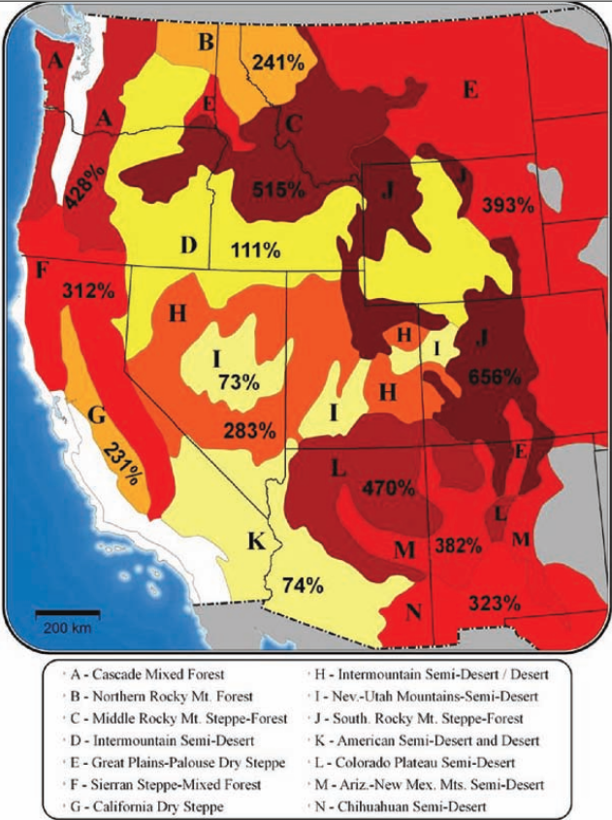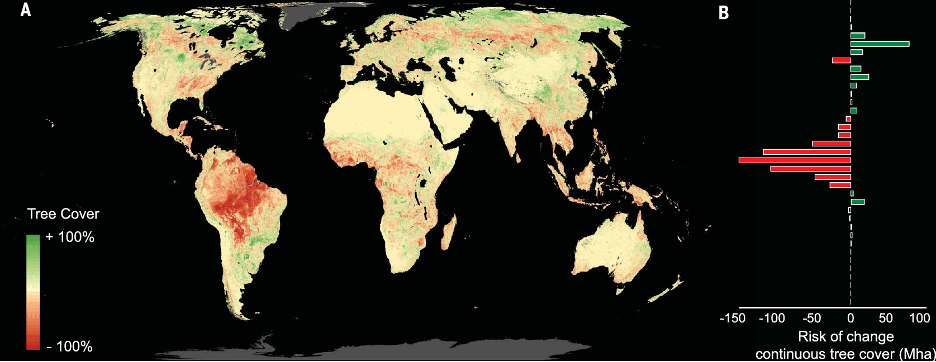Time to rethink nature-based solutions?


· 7 min read
It has been more than 30 years since the first carbon offset project used a nature-based solution (agroforestry and forestry conservation) to offset the emissions of a coal-fired power plant owned by the energy company AES. I developed the carbon quantification methodology for that offset project while at the World Resources Institute in Washington, DC. I subsequently authored some of the earliest studies looking at nature-based solutions (NBS) potentials for climate change mitigation, and worked extensively with the Intergovernmental Panel on Climate Change (IPCC) on the topic.
What, actually, are we talking about when we refer to nature-based climate solutions? NBS references a large category of climate change mitigation options based on preserving, restoring, or expanding biological stores of terrestrial or oceanic carbon. Protecting tropical rainforests, rewilding temperate zones, restoring soil carbon on agricultural lands, and sinking seaweed into the ocean are all examples of NBS options.
Originally seen as “buying time” for societal efforts to transition to a low-carbon economy, NBS (as the name implies) are increasingly being characterised as “solutions” to climate change, and as critical to the stated international goal of limiting average global temperature change to 2.0°C or less. A 2019 Guardian headline aptly represents how nature-based solutions are routinely characterised today: Tree planting ‘has mind-blowing potential’ to tackle climate crisis.
The release a few days ago of the IPCC’s Sixth Assessment Report (AR6), with its dire portrayal of where climate change is headed, is already fuelling calls to deploy NBS at scale. An Environmental Defence Fund press release states: “IPCC Underscores Need to . . .Deploy Natural Climate Solutions,” noting that NBS “have the potential to provide a significant proportion of the climate mitigation we need between now and 2030.”
It’s fair to ask, however, about the realistic nature of that potential. Based on the last 30 years of efforts to deploy nature-based solutions and given the science of climate change as laid out in AR6, we should at least question some of the assumptions upon which NBS as climate change mitigation are based. Here are some of the relevant questions.
Hundreds of studies (including my own work from almost 30 years ago) have explored NBS and their potential to slow climate change. But it has proven to be much easier to talk about how many billions of tons could be kept out of the atmosphere by ending tropical deforestation, for example, than it has been to meaningfully implement an end to tropical deforestation. At what point do we start to question how practically achievable the NBS “potentials” are?
If we could deploy NBS at scale, will the carbon still be sequestered in 2040, 2060, or 2100? AR6 reports that average global temperature has risen by about 1.1°C. That may not seem like a lot, but we’re already seeing the kinds of fires, droughts, heat extremes, and flooding events that threaten nature-based solutions. With the impacts of climate change manifesting much earlier than scientists originally anticipated, have we simply run out of time to deploy NBS?
We know, for example, that natural systems can be extremely sensitive to the implications of climate change. The figure below (2010) estimates the increase in annual area likely to be burned across the Western U.S. per 1°C of temperature change. The annual area burned increases by up to 750% (per 1°C!), illustrating the sensitivity of many Western ecosystems. We’re seeing that sensitivity play out in record fires year after year.

This is by no means the only study pointing out the vulnerability of natural systems to climate change. The graphic below from Bastin’s 2019 “Global Tree Restoration Potential” illustrates the potential impact of climate change on global tree cover by 2050. While obviously not uniformly negative, it illustrates a serious challenge to key nature-based solutions.

Last but not least is the case of soil carbon. It’s easy to calculate how much carbon has been lost from agricultural soils over the course of the last 100 years, and to suggest that restoring that carbon to those soils would sequester many billions of tons of carbon. Recent research, however, questions the stability of the stored carbon. Other research suggests that soil carbon generally is very sensitive to temperature and that 30-200 billion tons of carbon dioxide could be released per 1°C of warming.
So how much climate change will nature-based solutions have to grapple with in coming decades? We talk a great deal about the “substantially less than 2 degrees” target adopted in the Paris Accords in 2015, but the simple fact is that we are nowhere close to being on track for such an outcome. Risk expert George Backus estimates that regardless of how much political will might manifest in the aftermath of AR6, 3.5°C is the “best achievable case” by 2100.
Even this small number of data points should suggest a great deal of caution when it comes to embarking on large-scale NBS in the expectation of meaningfully mitigating climate change.
Nature-based solutions are critical to the “Net Zero by 2050” commitments more and more companies are making today. The large-scale availability of NBS-based offsets is also implicitly assumed by the Task Force on Scaling Voluntary Carbon Markets when it suggests expanding voluntary offset markets by up to 100x to solve climate change.
But let’s be clear. Carbon offsets are premised on the idea that purchasing an offset effectively negates the climate change impact of a ton of carbon dioxide emissions. That’s why companies can say they are on track to meet a “net zero” commitment, no matter how many tons the company is actually emitting. Because offsets are supposed to be delivering the “climate equivalent” of an emissions reduction, offsets by definition reduce the pressure for reducing actual emissions.
An NBS storing carbon for only a limited period time, however, whether 10 years or even 50 years, is not delivering the functionality of a carbon offset (unless a replacement obligation is part of the transaction, and that’s rare). The level of climate change AR6 discusses is likely to leave A LOT of corporate net zero commitments, and voluntary offsets markets generally, in trouble, if not entirely in ruins. What risks will this create for companies buying these offsets and making these net zero commitments? Will they be guilty of #greenwishing or #greenwashing given that they should have known what they were getting into? Could companies be held liable for their failure to meet their net zero commitments? We don’t have answers to these questions today, but they’re worth asking.
The central message of the IPCC’s recent AR6 report is the need to act dramatically to transition to a low carbon economy. One could argue that nature-based solutions may hinder this effort and increase rather than reduce societal risk, by increasing the uncertainty surrounding mitigation efforts. Hundreds of billions of tons of carbon dioxide, thought to be sequestered from the atmosphere through NBS, might suddenly be in play again.
One expert recently noted in a personal communication that:
“Nature-based climate solutions are well intentioned and sound nice but are decades too late and are now a delusional distraction.”
There are many reasons to pursue the kinds of efforts generally characterised as nature-based solutions. Yet anyone who sees climate change as a serious threat, is focused on setting or implementing a Net Zero by 2050 commitment, or is involved in expanding voluntary carbon markets, should be checking (and double-checking!) their assumptions about the ability of nature-based solutions to meaningfully advance climate change mitigation. Failing to do will likely come to be seen as another example of “willful blindness,” comparable to installing a fire suppression system in your home or business with a label stating: Warning – May Fail in Case of Fire.
Note: If this piece calling for a review of one’s assumptions regarding nature-based solutions is relevant to your decision-making, visit our Nature-Based Solutions Roadmap into the Climate Web, or our Climate Assumptions Audit website for more information.
illuminem Voices is a democratic space presenting the thoughts and opinions of leading Energy & Sustainability writers, their opinions do not necessarily represent those of illuminem.
Glen Jordan

Sustainable Lifestyle · Sustainable Living
illuminem briefings

Architecture · Carbon Capture & Storage
illuminem briefings

Labor Rights · Climate Change
Financial Times

Carbon Market · Public Governance
GB News

Carbon · Sustainable Mobility
The Independent

Effects · Climate Change